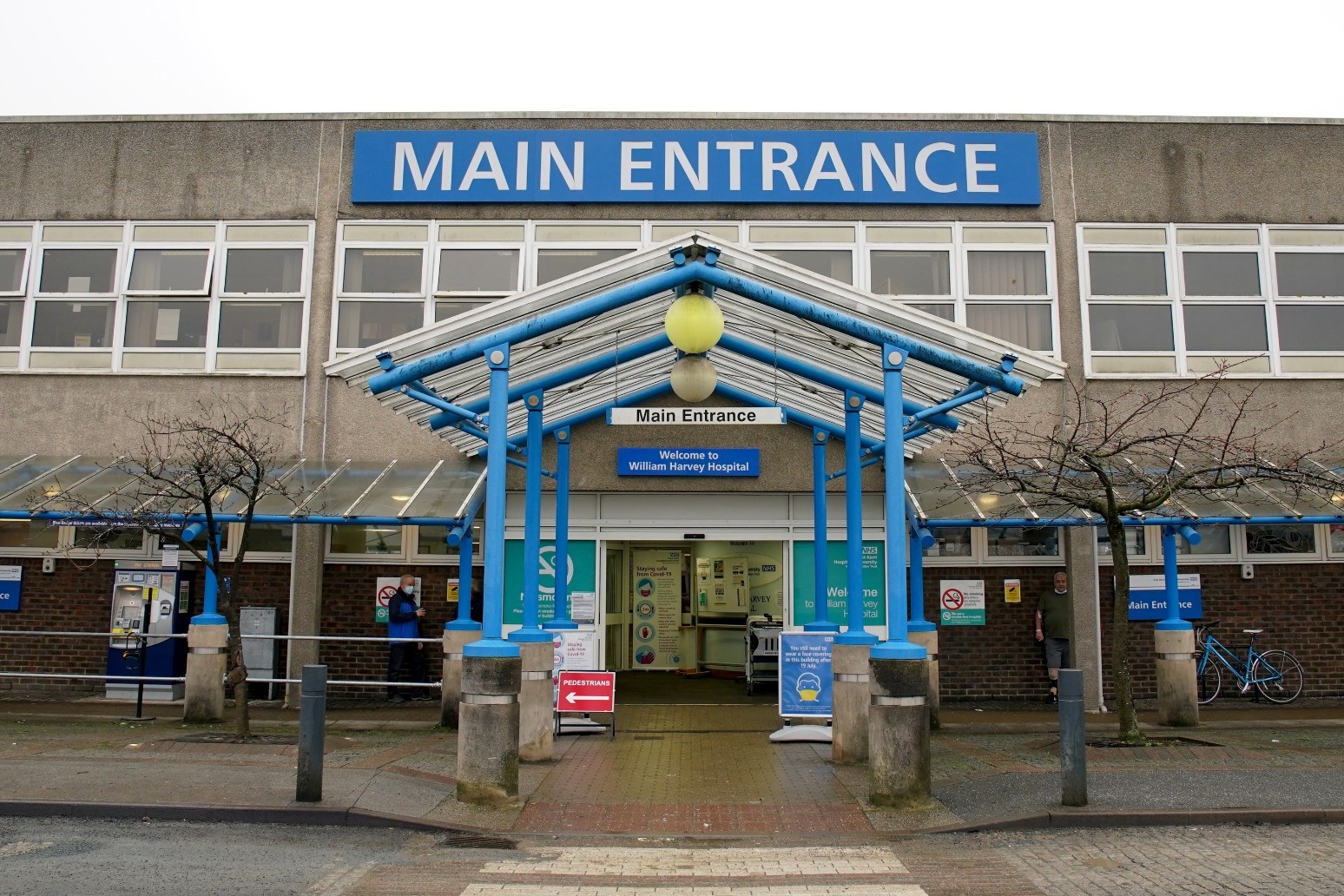
Fall in proportion of Covid hospital patients primarily treated for the virus
The proportion of Covid-19 patients being treated primarily for the virus in England’s hospitals has dropped slightly, new figures show.
Data from NHS England, published on Friday, shows that, of the 8,321 patients with coronavirus in NHS acute hospital trusts in England on December 28, 5,578 (67%) were being treated primarily for Covid.
This is down from 71% a week earlier and 74% at the start of December.
But the number being treated primarily for coronavirus is still rising – up 26% from 4,432 on December 21 to 5,578 on December 28.
The statistics also show that the number of patients with Covid-19 but primarily being treated for something else also rose from 1,813 to 2,743, a jump of 51%.
NHS Providers chief executive Chris Hopson said that trust leaders were reporting that a lot of the patients being admitted were coming in with, rather than because of, Covid-19.
He added: “The proportion varies across the country but, as you’d expect, is higher where Covid community infection rates are higher.
“But we’d urge caution because we don’t yet have a detailed picture of what’s happening with older, more vulnerable patients.
“A lot of the earlier infections have involved younger people, though mixing at Christmas and new year is likely to change that. We’ll need to follow that very closely.”
Mr Hopson also said that even if people were being admitted with Covid instead of because of it, hospitals still needed to separate them from non-Covid patients to prevent spreading infection.
He added: “That is really important in keeping patients and staff safe, but it also takes up extra resource and space at a time when the NHS is already operating beyond full stretch.”
NHS England has said that Covid patients primarily being treated for something else still have to be separated from non-Covid patients and the virus can be “a significant co-morbidity”.
It added: “The majority of inpatients with Covid-19 are admitted as a result of the infection.
“A subset of those who contract Covid in the community and are asymptomatic, or exhibited relatively mild symptoms that on their own are unlikely to warrant admission to hospital, will then be admitted to hospital to be treated for something else and be identified through routine testing.
“However these patients still require their treatment in areas that are segregated from patients without Covid, and the presence of Covid can be a significant co-morbidity in many cases.
“Equally, while the admission may be due to another primary condition, in many instances this may have been as a result of contracting Covid in the community. For example, research has shown that people with Covid are more likely to have a stroke. In these cases people would be admitted for the stroke, classified as ‘with’ Covid despite having had a stroke as a result of having Covid.”
Separate figures, also published on Friday, show the number of patients in hospital with coronavirus in England had risen to 12,395 by 8am on New Year’s Eve.
This is up 68% from a week earlier and is the highest number since February 25.
During the second wave of coronavirus, the number peaked at 34,336 on January 18.
There were 2,370 Covid-19 hospital admissions in England on December 29, up 90% week-on-week and the highest number since January 29.
During the second wave of coronavirus, admissions peaked at 4,134 on January 12.
The number of Covid-19 admissions includes people admitted to hospital in the previous 24 hours who were known to have Covid-19, plus patients diagnosed in hospital with Covid-19 in the previous 24 hours.
Published: by Radio NewsHub